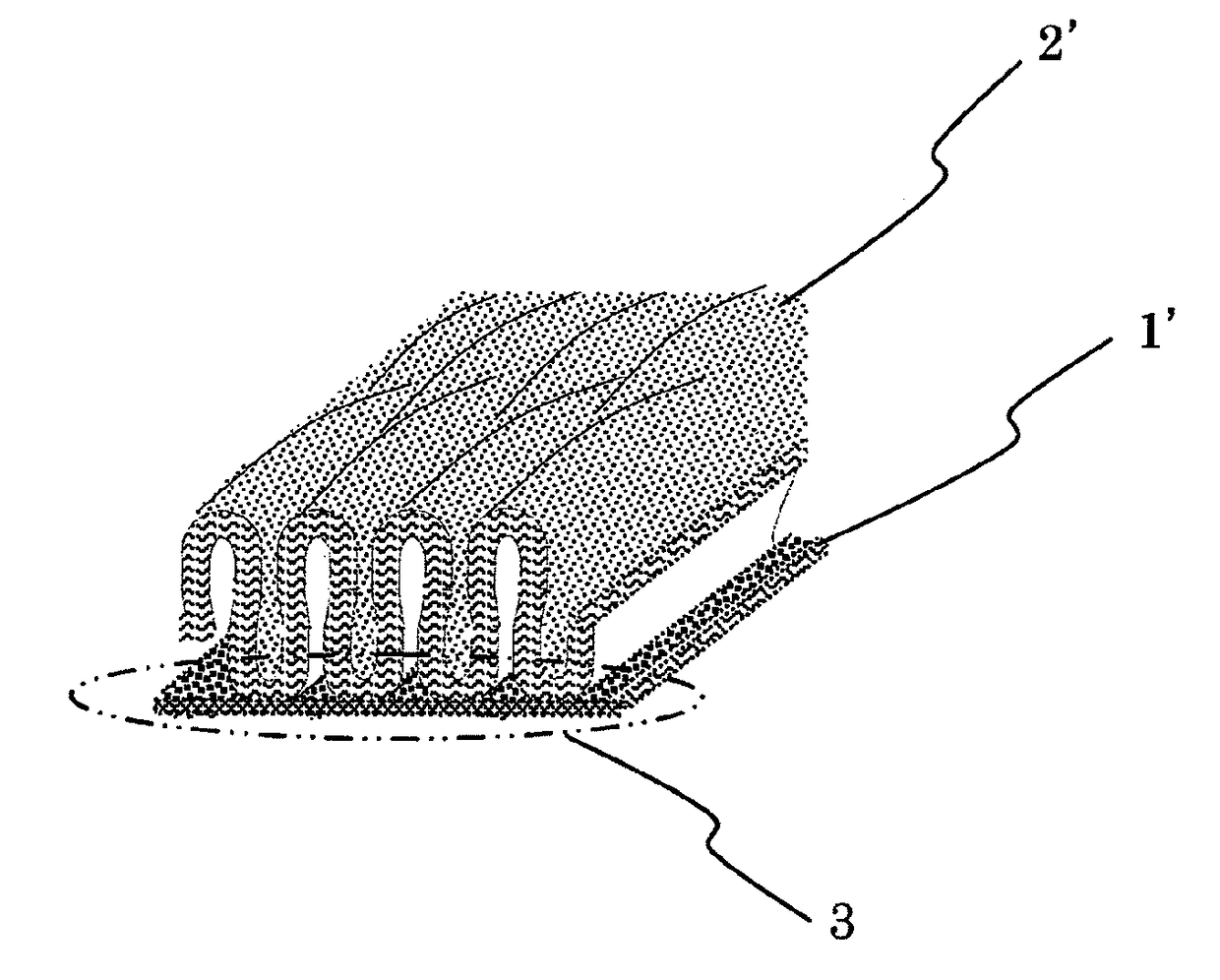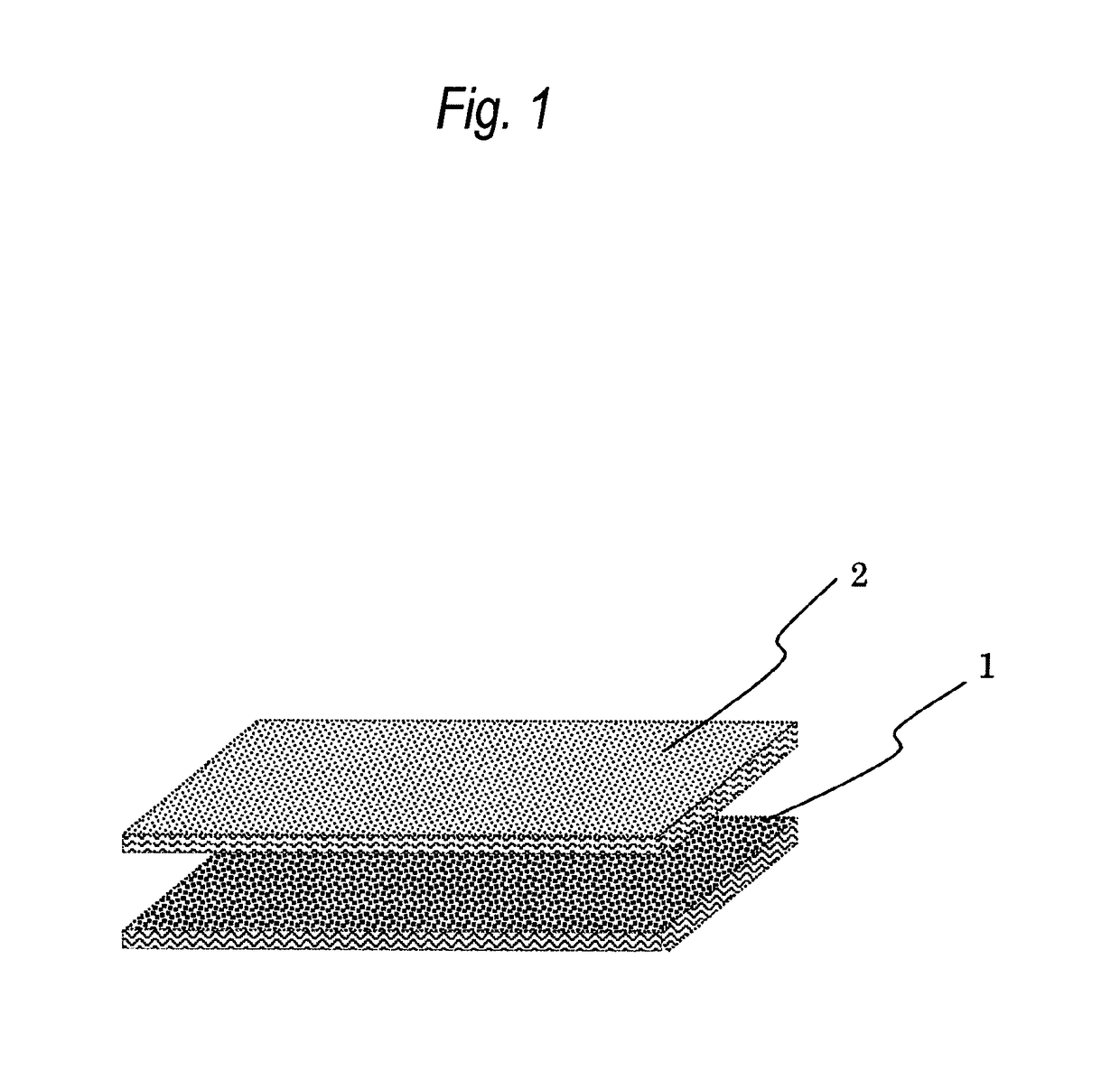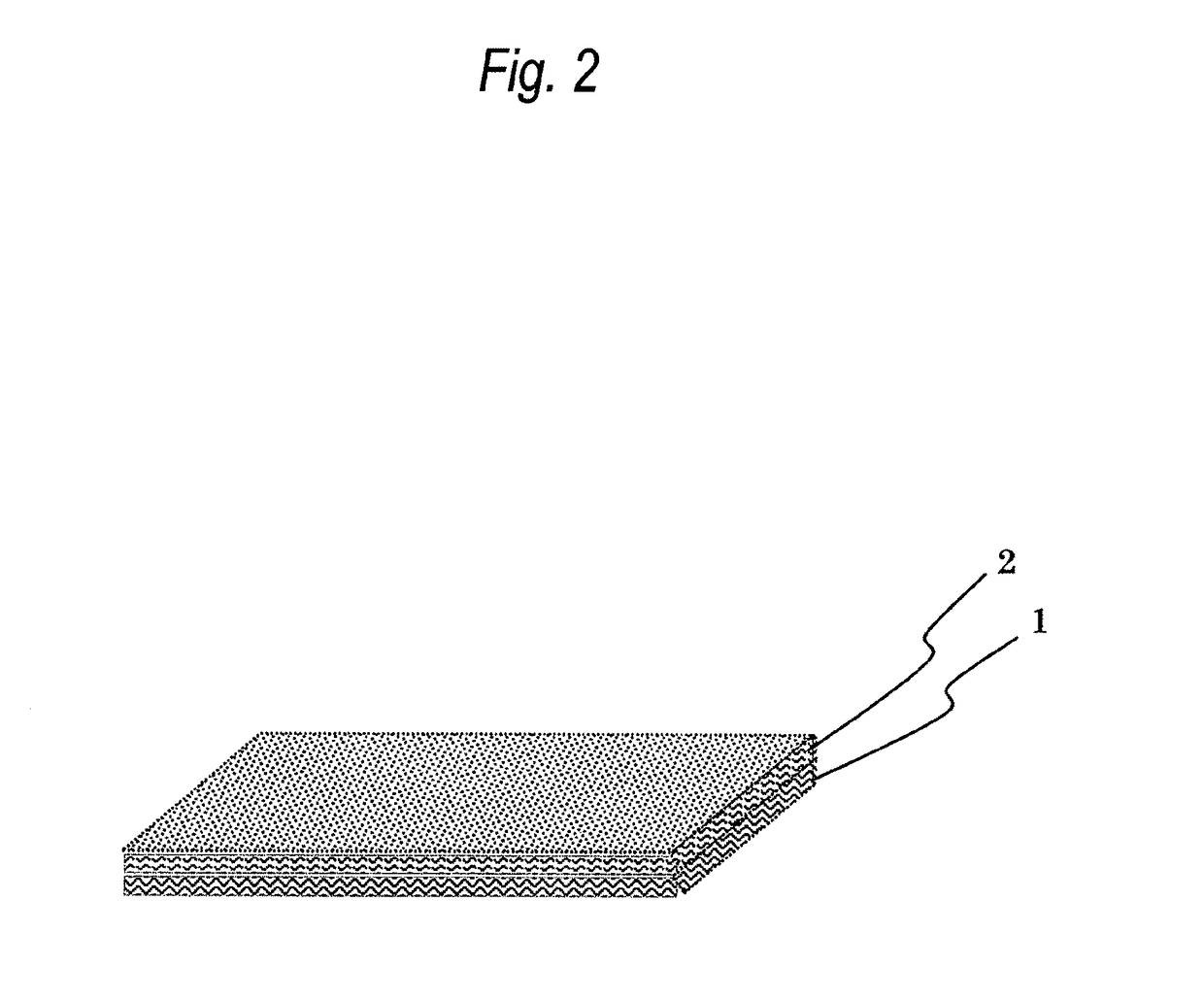Bulky nonwoven fabric
a non-woven fabric, lightweight technology, applied in the field of bulky non-woven fabrics, can solve the problems of low flexibility of the web, low bulkiness of the shrinkable monocomponent fiber web layer, and relatively high facility cost and energy cost, and achieve excellent cushioning properties, excellent bulkiness, and excellent pleasant feel
- Summary
- Abstract
- Description
- Claims
- Application Information
AI Technical Summary
Benefits of technology
Problems solved by technology
Method used
Image
Examples
example 1
[0122]Even when the unit weight was the same, as shown in Table 1, the bulky nonwoven fabric of Example 1 was larger in thickness and thus was more excellent in bulkiness than the nonwoven fabric of Comparative Example 1. Moreover, when the bulky nonwoven fabric was held by five monitor person from the fiber layer B side and sensory comparison thereof with the nonwoven fabric of Comparative Example 1 was performed about pleasant feel and cushioning properties as keywords, all the five monitor persons replied that the nonwoven fabric of Example 1 was excellent more than one can expect from the difference in thickness.
example 2
[0123]As shown in Table 1, from the results of Example 2, it was found that a bulky nonwoven fabric could be similarly produced even when a polyester-based latent crimpable heat-fusible conjugate fiber was used.
example 3
[0124]Even when the unit weight was the same, as shown in Table 1, the bulky nonwoven fabric of the Example 3 was larger in thickness and thus was more excellent in bulkiness than the nonwoven fabric of Comparative Example 2. Moreover, the bulky nonwoven fabric was held by five monitor person from the fiber layer B side wherein sensory comparison of the nonwoven fabric between Example 3 and Comparative Example 2 was performed about hand feeling of both nonwoven fabrics using pleasant feel and cushioning properties as keywords. As the results, all the five monitor persons replied that the nonwoven fabric of Example 3 was excellent more than those one can expect from the difference in thickness.
PUM
| Property | Measurement | Unit |
|---|---|---|
| specific volume | aaaaa | aaaaa |
| area | aaaaa | aaaaa |
| distance | aaaaa | aaaaa |
Abstract
Description
Claims
Application Information
 Login to View More
Login to View More - R&D
- Intellectual Property
- Life Sciences
- Materials
- Tech Scout
- Unparalleled Data Quality
- Higher Quality Content
- 60% Fewer Hallucinations
Browse by: Latest US Patents, China's latest patents, Technical Efficacy Thesaurus, Application Domain, Technology Topic, Popular Technical Reports.
© 2025 PatSnap. All rights reserved.Legal|Privacy policy|Modern Slavery Act Transparency Statement|Sitemap|About US| Contact US: help@patsnap.com



